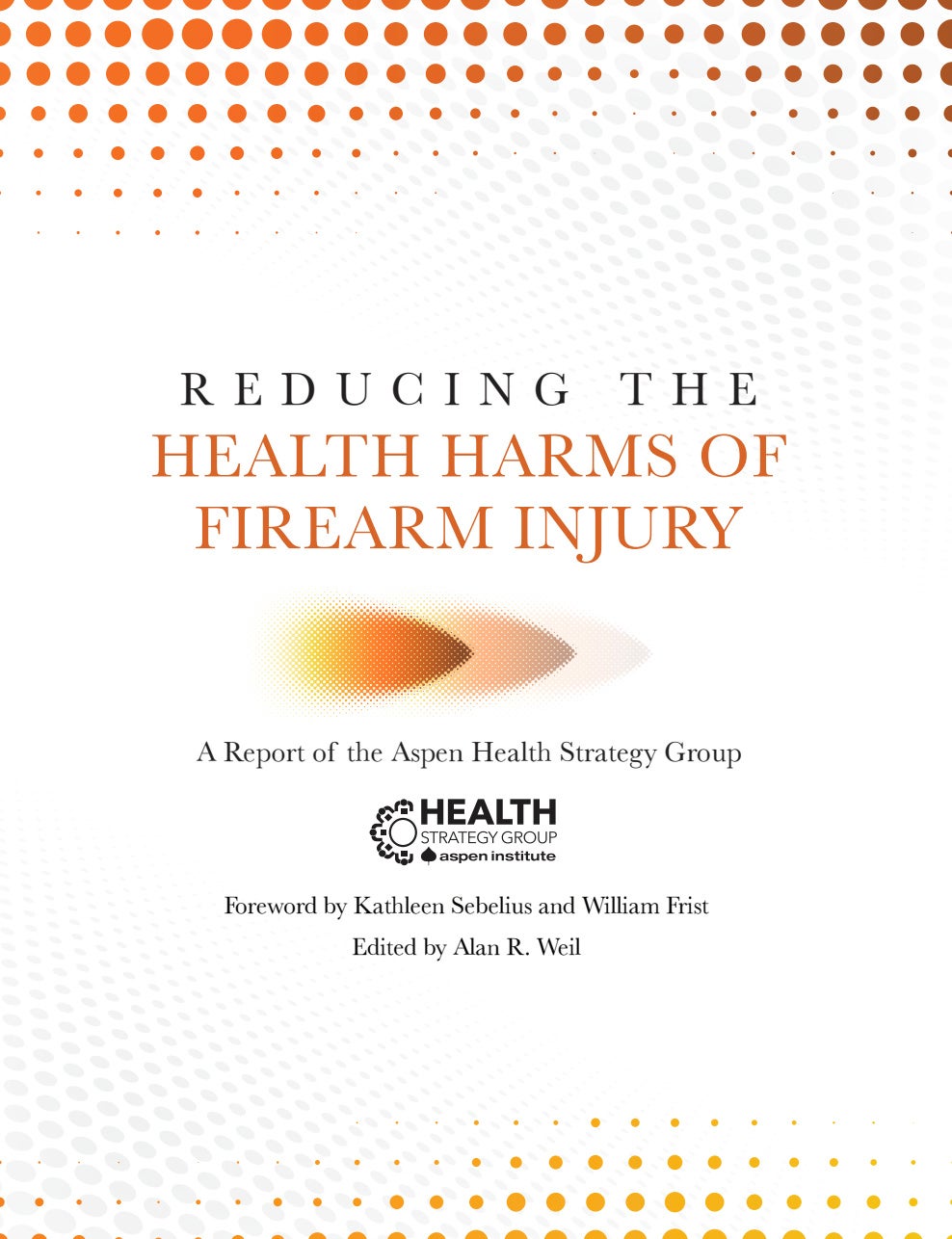One year ago—February 11, 2020—the Institute’s Health, Medicine and Society program brought together three experts for a panel called “Straight from the Source: Experts Discuss Novel Coronavirus.”
The disease that has since wracked the world had only been officially named COVID-19 earlier that morning. At that point, it had claimed more than a thousand victims in two dozen countries. Epidemiologists were clear-eyed about the contagion’s pandemic potential, among them the three experts on stage that day: Nancy Messonnier, director of the National Center for Immunization and Respiratory Diseases at the Centers for Disease Control and Prevention; Ron Klain, former White House Ebola Response Coordinator under the Obama administration and now President Biden’s chief of staff; and Anthony Fauci—before he became a household name.
Ruth Katz, executive director of the Health, Medicine and Society Program, introduced the panel. On this grim anniversary—one year from when there were only 13 total US cases, all of which were improving with minimal intervention—she reflects on what we knew then, and what we’ve learned during what she calls the “biggest public health challenge” the world has seen in the last 100 years.
During the panel, Dr. Messonnier suggested that the country could slow spread through “social distancing” (a term she had to define), with the hope of buying us some time in the fight against the virus. What are your thoughts on social distancing and how it was implemented?
I constantly have to remind people that this was a brand-new virus—never seen before. We had to learn along the way what worked and what didn’t work. But social distancing, wearing masks, spending time outside instead of inside, congregating with only small groups of people—these are public health tools that we learned relatively early on could make a difference in limiting the spread of the virus. As devastating and horrific as are the number of deaths and infections we have experienced—and continue to experience—in the US, there is no doubt they would be much worse if we didn’t follow these effective public health measures. I just wish early on there had been a large-scale campaign led by national leaders about the effectiveness of these tools and the importance of using them. Our morbidity and mortality rates would have decreased significantly.
Ron Klain predicted that the virus would overwhelm our health care system because we don’t have a national system. Do you see evidence of that playing out?
We don’t have a national health care system in this country. This is especially true when it comes to matters of public health. They are generally handled at the state and local level with the Centers for Disease Control and Prevention and other parts of the federal government providing guidance and assistance as appropriate. These state and local public health entities have been overwhelmed by the COVID experience. And in many instances, state and local health officials have actually been personally threatened by some of those who oppose public health mandates such as the wearing of masks. That kind of action is more than overwhelming—it is disgraceful and should be unacceptable.
During various peaks or surges of the epidemic, such as those we witnessed after the Christmas holidays, many of our hospitals were on the brink of collapse. Some have had to make life and death decisions about which patients would be treated (because they had a better chance of survival) and which would not (because their chances of survival were lower).
At the end of the day, despite preparedness plans that were developed by the Obama administration, the country was not well prepared to deal with this pandemic. Whether you’re talking about the availability of masks and other personal protective equipment, or the distribution of vaccines, or effective national leadership, the country has not performed as it should. No doubt, once we are through this nightmare, Congress, public health experts, and others will be taking a very hard look at where we failed and how we must do better next time. And no doubt as well, there will be a next time.
Dr. Fauci noted that we were likely at least a year from a vaccine. Several viable vaccines emerged well before that time. Was there some behind-the-scenes science that sped the process up, or was this mostly luck?
Tony was actually a bit off in his prediction—very effective vaccines have been developed even faster. A measure of luck may well be a part of that COVID-19 success story. For example, experience with other coronaviruses and RNA viruses enabled researchers to quickly grasp that the COVID-19 protein was a promising vaccine target. And because there was so much virus already circulating in the US, the UK, Brazil, and elsewhere, it was possible to compare infection rates in vaccinated and placebo study arms relatively quickly. But whatever the debt is owed to chance, the vaccines could never have been ready for quick study had it not been for prior investments in basic science and global research and development preparedness. Coincidentally, the Sabin-Aspen Vaccine Science & Policy Group had chosen vaccine R&D as its conference topic a year before COVID, which shows there already was lots of excitement about new approaches.
Many other factors also helped to facilitate vaccine development—the urgent threat of the pandemic; an unprecedented willingness to partner; advance market commitments and other government and philanthropic funding that greatly lessened financial risk; national pride; corporate pursuit of reputational benefit; and regulatory flexibility.
Dr. Fauci also noted that climate change and population pressures would make pandemics more likely. Are we more ready for the next one?
Hopefully, we will be better prepared for the next pandemic. We may not face another one for another 100 years, but there will certainly be other pandemics.
The look-back studies that will be top priority once this pandemic is behind us will identify what went right and what went wrong and make recommendations on how we can do better next time. Let’s hope those recommendations are fully implemented and followed going forward.
As you were introducing the panel one year ago, you informed the audience that, earlier that morning, the World Health Organization had officially named the coronavirus disease COVID-19. Looking back, what’s it like to have shared news like that?
Because of our ability to bring the right people together here at the Aspen Institute, we were among the very first organizations to design and host a high-level discussion about both the coronavirus and as it turned out, COVID-19 disease, and to bring to the public’s attention what turned out to be a life-changing experience for all Americans. Not only did we take on what has become the public health challenge of this century; we also had the key players in the room to talk about what was coming and what to expect. I am very proud that we played that convening role and I continue to be proud of all the work so many Institute programs are now doing to address the impact of the pandemic.
But it’s amazing to think we held that session a year ago this week. And it’s unbelievable to see what has happened since then.


